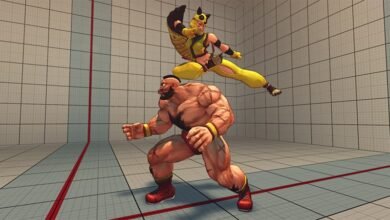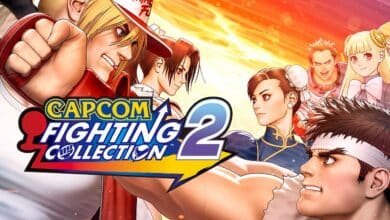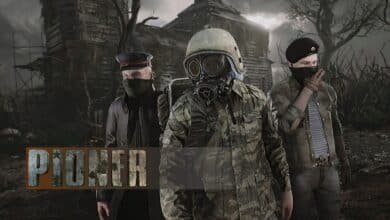Dota 2: The Ultimate Strategic MOBA Guide

The multiplayer online battle arena game Dota 2 is very competitive and packed with action games, this was the game developed and published by Valve Corporation. In 2013, Valve released the game as a standalone sequel to the popular Defense of the Ancients (DotA) mod from Warcraft III. Dota 2, a game with millions of players around the world, is known as one of the most strategic and most challenging games in the world. It includes a complex gameplay system, a large hero pool as well and a very active and popular esports scene with its record-breaking prize pools.

This guide provides an in-depth look at Dota 2’s history, mechanics, competitive landscape, and impact on the gaming industry.
The History and Evolution of Dota 2
Origins: From DotA to Dota 2
The well-known game Dota 2 became developed as a result of the DotA, a mod in the game which arose from the fan-based community of Dota. No such game as Warcraft III: Reign of Chaos and the expansion The Frozen Throne would have existed, if not for this type of mod that was released by the community.
In view of the incredible promise of DotA, Valve Corporation extended its invitation to DotA’s chief developer, IceFrog, for the creation of an independent version. Consequently, the stage was set for the emergence of Dota 2, which was eventually put on the market in July 2013, immediately following two years of beta testing.
Transition to the Source 2 Engine
Initially backed up by Valve’s Source Engine, Dota 2 completed a dramatic facelift when relabeled as Source 2 Engine in 2015. This modification, commonly referred to as the Dota 2 Reborn Update, provided:
- Enhanced graphics and rendering capabilities.
- Improved performance optimization.
- A more accessible modding system for community content.
- A redesigned in-game UI and dashboard.
Gameplay and Core Mechanics
Dota 2 is an MOBA game that provides a good time with highly strategic 5v5 battles, which is a mode of play, in which, the players in the fighting against each other at the same time, require skilled teamwork, lurking before striking, and mechanical mastery. When playing this game, players are divided into two groups – The Radiant and The Dire – both of which are trying to destroy the Ancient of their opponents, which is basically a big wall, and it is located in their base.
The Map and Lanes
The game is played on a three-lane map, consisting of:
- Top Lane (long lane for Radiant, safe lane for Dire).
- Middle Lane (shortest path between the two Ancients).
- Bottom Lane (safe lane for Radiant, long lane for Dire).
Each lane is guarded by towers, while the jungle contains neutral creeps that provide additional resources.
Heroes and Roles
Dota 2 offers over 120 playable heroes, divided into three main attributes:

- Strength – High durability, tanky heroes (e.g., Axe, Tidehunter).
- Agility – High damage dealers with attack speed focus (e.g., Juggernaut, Phantom Assassin).
- Intelligence – Spellcasters with powerful abilities (e.g., Lina, Invoker).
Heroes are categorized into roles, including:
- Carry – Focuses on farming and scaling into the late game.
- Support – Provides healing, crowd control, and map vision.
- Mid-laner – Takes early control of the game with powerful abilities.
- Offlaner – Initiates fights and controls enemy movements.
- Roamer – Moves around the map to create opportunities for teammates.
Key Strategies and Objectives
To win a Dota 2 match, teams must execute strategic gameplay elements such as:
Farming and Last-Hitting – Acquiring gold and experience efficiently.
Map Control & Vision – Using observer and sentry wards to gain a tactical advantage.
Teamfighting – Coordinating skills and items to outmaneuver the opponent.
Roshan and Aegis – Roshan is the most powerful neutral creeps whom you can defeat and get Aegis of Immortality that would give the holder a second life.
Esports and the Competitive Scene
Dota 2 has established itself as a premier esports title, with The International (TI) standing as the pinnacle of competitive gaming. The tournament’s prize pool has reached record-breaking figures, thanks to the sale of Battle Passes, often exceeding $40 million.
Major Tournaments
The International (TI) – The biggest annual Dota 2 event.
Dota Pro Circuit (DPC) – Valve’s official competitive league.
ESL One, DreamLeague, and Riyadh Masters – Third-party major tournaments.
Legendary Teams and Players
Dota 2 has seen iconic teams and players rise to prominence:

- OG – Two-time TI winners (2018 & 2019), known for their aggressive playstyle.
- Team Secret – Dominant in multiple DPC seasons.
- Evil Geniuses – Won TI5 with an incredible team performance.
- PSG.LGD – Consistently one of the strongest Chinese teams.
Notable players include:
N0tail – Captain of OG’s legendary TI-winning squad.
Dendi – A charismatic mid-laner with legendary plays.
Miracle- – Known for his incredible mechanical skill and game sense.
Updates and Changing Metas
Notifications for Dota 2 usually come as patch updates that shake up how the game plays. Every single patch brings in balances for heroes or items and also adds in a new mechanic Let’s keep things fresh and competitive.
Game-Changing Updates
Patch 7.00 – Introduced the Talent Tree system, drastically changing hero builds.
Patch 7.20 – Reworked multiple hero abilities and item mechanics.
Patch 7.30+ – Implemented major changes to neutral items and economy.
Community, Custom Games, and Cosmetics
Dota 2’s community remains one of the most active and creative in gaming. Valve has integrated several features to support fan contributions:
Custom Games – Players can create and enjoy modified game modes via the Steam Workshop.
Cosmetics & Skins – The game offers thousands of cosmetic items, such as hero sets, couriers, and voice packs.
Dota 2 Workshop – Artists and designers can submit content for potential in-game inclusion.
Why Dota 2 Stands Out
Dota 2’s infinite strategic depth, high skill ceiling, and constant evolution make it an unparalleled gaming experience. Unlike other MOBAs, Dota 2 features:
- A completely free-to-play model with no pay-to-win mechanics.
- A highly complex and rewarding learning curve.
- A dynamic and ever-changing competitive landscape.
- One of the largest esports prize pools in history.
Conclusion
Few MOBA games on the market can compete with the outstanding experience Dota 2 offers, which stands alone as the game is a leading force in the eSports industry. The game has remained strong due to its high strategy, thrilling competition, and loyal community. Dota 2 has an infinitely rewarding experience, whether you are starting out in the sport or a professional, as it enables you to grow and test both your mind and mechanics.



